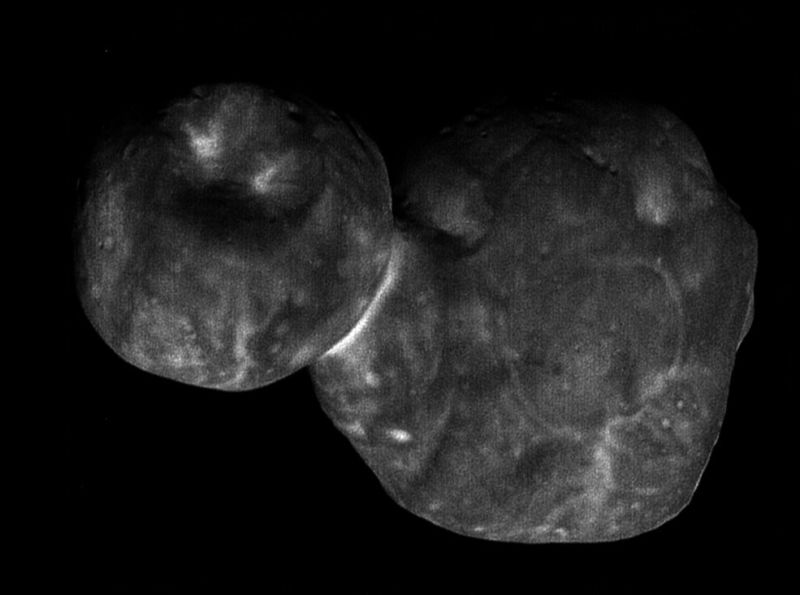
Twenty-six minutes after the clock struck midnight on New Year’s Eve in Times Square, the long-range camera aboard the New Horizons spacecraft was hard at work. The probe was just six minutes from its closest approach to Ultima Thule, an object formally named 2014 MU69, which resides in the Kuiper Belt around the outer Solar System.
One, two, three—the images ticked through, each with an exposure time of just 0.025 seconds. Four, five, six—and now the spacecraft was less than 7,000km away from its target. Seven, eight, nine—these pictures had to be perfect, because New Horizons was passing Ultima Thule at a speed of more than 50,000km/hour.
Only recently were investigators able to download all of these images and cobble together a composite image of the contact binary. With a resolution of 33 meters per pixel, this is probably as good of a view as we’re going to get of Ultima Thule. And it still looks something like a snowman, peanut, pancake, or combination thereof.
“Getting these images required us to know precisely where both tiny Ultima and New Horizons were—moment by moment—as they passed one another at over 32,000 miles per hour in the dim light of the Kuiper Belt, a billion miles beyond Pluto,” New Horizons Principal Investigator Alan Stern said in a news release. “This was a much tougher observation than anything we had attempted in our 2015 Pluto flyby.”
There are some interesting details to glean here, especially the contrast between several bright, round areas and darker, pitted regions. The astronomers will now pore over these images—and data captured by New Horizons’ six other scientific instruments—to better understand the nature of these features and whether they have been caused by impacts or processes within Ultima Thule.
New Horizons has continued to fly onward, with its lonely trek now taking it more than 6.6 billion km away from Earth. It requires more than six hours for radio signals from the spacecraft to reach Earth via NASA’s Deep Space Network. But the spacecraft is healthy, and it’s likely that Stern and his colleagues will seek to fly by one additional object in the Kuiper Belt before releasing their spacecraft into the void forever.
